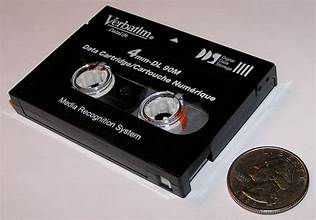1950s
MAGNETIC TAPE

In the 1950s, computer storage was primitive and limited in capacity compared to modern standards. One of the primary storage technologies of the time was **magnetic drum memory**, which consisted of a rotating drum coated with a magnetic material. Read/write heads were positioned along the drum to store and retrieve data. Though it provided relatively fast access, its storage capacity was low, typically in the range of a few kilobytes. Another widely used method was **punch cards**, which stored information as a series of holes punched in stiff paper. While reliable, punch cards were bulky, required careful organization, and could only store small amounts of data per card.
For larger storage needs, **magnetic tape** was introduced, allowing sequential storage of data on reels of tape. It had a much higher capacity than punch cards or drums but was significantly slower in accessing specific information since the tape had to be wound to the correct position. In terms of short-term storage, early computers relied on **vacuum tube memory** and the **Williams-Kilburn Tube**, which used electrostatic charges on cathode-ray tubes to hold data. These technologies were expensive, unreliable, and consumed vast amounts of power, making them impractical for large-scale storage.
Despite these limitations, the storage methods of the 1950s laid the foundation for modern computer memory and data storage. The need for faster, more efficient, and higher-capacity storage solutions drove the development of transistors, magnetic disks, and eventually, semiconductor memory. While computers of the 1950s could only store a few kilobytes of data, these early innovations played a crucial role in shaping the digital storage revolution that followed in later decades.